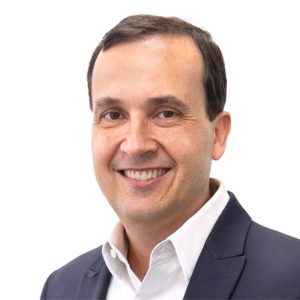What challenge(s) do our clients face?
Keeping pace with ever-changing trends and consumer desires in a highly competitive market
At Integration, we believe that no two clients and no two contexts are the same. However, in our experience working with more than 60 leading beauty and personal care clients across the world, we have observed some common challenges that underpin the category, particularly within the mass market.
Overcoming any one of these challenges can be the key to unlocking substantial and sustainable growth and fending off competition in what is a highly competitive market.
How do we help?
Tackling such challenges can be daunting and inefficient in the absence of clear objectives, concrete plans and the backing of the whole organization and its leadership. Technical expertise is fundamental to success, but so too is a team ready to push the change. We enjoy supporting companies in combining these two crucial ingredients.
We understand how to develop solutions and tools which can unlock growth (e.g. category management frameworks) or address operational issues (e.g. S&OP); and we know how to train your professionals so they can take these solutions forward and continuously improve.
This means we have an established track record of supporting our clients in their ongoing efforts as well as in specific moments such as a merger or divestment. With our knowledge of the sector, we are able to enter into depth in topics ranging from demand planning to point of sales (PoS) execution.
Commonly applied services
Clients
We have worked with clients in different categories, geographies and positions along the value chain:
SUCCESS STORIES
CHALLENGE
A leading global Consumer Beauty company had reached a moment where they were experiencing high performance in Modern Trade channels, but significantly lower performance in the Indirect Traditional Trade channel. The company came to understand that it was drastically under-indexed in sales via distributors in key-opportunity regions, and a majority of sales teams were reporting problematic distributor relationships.
To combat this challenge, they asked for Integration’s support in developed a global methodology that could support their local operations and boost indirect trade results.
APPROACH
In our first phase of the Programme we built a solid foundation for sustainable change. This took shape as a detailed, bespoke “playbook” that was not limited to the needs of emerging markets, but instead offered commercial teams at all stages, ideas for taking their distributor relationships to the next level, including the ability to:
- Map and select target distributors
- Run complete assessments of distributor performance, financial health and operational capabilities
- Design, implement and monitor annual plans to develop distributor capabilities and improve results for the client and its partners
- Terminate relationships with underperforming or operationally inadequate distributors
The playbook balanced the need for a global approach with fitting the local realities of each market. From the outset, we developed the methodology in strong collaboration with the regional representatives in each continent.
Next came an implementation phase dubbed ‘local acceleration’; where we aimed to guarantee the practical, effective implementation across selected zones.
Over the course of four years we supported the practical application of the methodology across 12 vastly different countries (ranging from Pakistan to Peru), running training sessions and adapting guidance appropriately to local needs. Each of these countries represented diverse challenges, ranging from finance issues to process improvements to deeper strategic discussions.
RESULT
This highly tailored approach resulted in pragmatic recommendations for each market and enabled quick implementation. At the same time, the standard nature of the programme across countries made it possible to transfer best practices from market to market.
As a consequence of the successful implementation, sales by the distributor have outpaced growth in modern trade by 5 percentage points, thanks to significantly closer cooperation with distributors (e.g. (+123% Pay For Performance Agreements, +43% Joint Distributor Business Plans), while simultaneously reducing days of inventory by 16% on average.
CHALLENGE
Our client a large American multinational beauty company had recently acquired multiple brands in a strategic move to widen and grow its product portfolio. They had decided to integrate the Planning, Manufacturing and Logistics Network of the acquired companies in order to capture the foreseen synergies.
The consolidation process was extremely challenging because it required a high level of coordination across +250 professionals in +30 countries in Europe, USA, Canada and EMEA, +15 production sites and +75 distribution centers around the globe.
Moreover, the benefits related to this integration were desired to be captured as early as possible given the strategic importance to the company worldwide.
APPROACH
Given the accelerated timelines and complex challenges, a large Integration team was deployed to work full on site, bolstering the client team. This ensured close proximity with all stakeholders, on the job training/change management for staff, better communication across the countries and an ability to resolve unforeseen issues swiftly.
We assumed the project management responsibility of the Manufacturing Footprint and Distribution Centers consolidation programs preparing a detailed plan considering all involved regions, business areas and processes. To ensure the forecasted synergies would be realized, a robust PMO was deployed to track not just deliverables, but also operational objectives and benefits.
RESULT
We built clear action plans with the client which delivered up to 5% of accumulated cost savings over the next 5 years, supported by a detailed implementation roadmap coverin
We supported the client in delivering the integration in a very aggressive timeline with minimal business disruption. Including the closure of some manufacturing sites in addition to the transfer of production lines. In distribution, in just 6 months we coordinated the building and starting-up of distribution centers across multiple countries and managed the incorporation of 3rd party logistics.
Beyond the business implementation results, Integration ensured the engagement, alignment, and cooperation along the entire transition of the +30 involved countries. This ensured sustainable operational transformation after our team had rolled-off.
g production footprint, distribution and GTM expansion.
CHALLENGE
A global health and personal care company had redesigned their GTM strategy. However, they faced the difficult task of actually implementing it, given that the new design included:
- a significant transformation to the indirect network
- the creation of 4 different category clusters (each with its own GTM strategy)
- moving the GTM approach from region only to region – channel – category cube
- deep changes in commercial structure, channels and portfolio
- high impacts to clients and professionals
In addition, the company had an extremely complex multinational organizational structure which made alignment and decision making even harder. The regional demands considering Brazil’s broad geography were also a challenge to be faced.
APPROACH
Integration supported throughout the implementation phase with three important highlights from our approach.
- Firstly, Integration supported with the creation of a governance guided by a “Control Tower” which was then turned into a GTM area responsible for managing sell-in & sell-out results, communication for impacted channels and clients, routines, measurement of broken down results, revenue and discount management etc. – all with clear KPIs and dashboards.
- Secondly, we went on roadshows from region to region with the client’s teams in order to validate the indirect network and portfolio movements with local leaders who knew the market reality.
- Thirdly, our close stakeholder management approach was key for guaranteeing alignment and communication between local and international stakeholders, as well as training and preparing the internal team to be responsible for managing the Go-to-Market moving forwards.
RESULT
The project led to strong results, including a market share increase in 80% of categories and more than 20% growth in key categories. The new GTM area was in particular a success; creating the strong governance required to oversee processes, routines, KPIs and revenue management controls.
CHALLENGE
One of the largest Beauty & Personal Care organizations in the world had recently acquired a top performing Hair Care Brand worldwide, and intended to expand its footprint to the Brazilian Market. The organization needed to understand the market characteristics and dynamic in depth, as the acquired brand represented a new category, and the team were working towards aggressive global targets based on a successful launch.
APPROACH
We sequenced our approach as follows to gain clarity on a winning strategy:
- We started with a deep dive into the new category – through market research and internal data, we mapped the differentials that should be at the heart of the expansion strategy.
- This allowed us to define the brand’s key success factors, and by comparing these with international operations (US, UK), we could create a factbook evaluating the match between the brand’s identity and the Brazilian market reality.
- This formed the basis of the Brand Plan and Business Case, in which we translated key definitions into actions for launch – i.e. SKU definitions, right- and how-to-win, channel activation plans, and selling stories etc.
- These actions were incorporated into an implementation plan with the necessary governance, change management actions, and team, to ensure that the project would continue to be implemented successfully after our exit.
RESULT
The work resulted in a launching the brand in new geographies, with selected chains responsible for creating a halo effect, and causing the company to hit its volume targets 4 months in advance.
In addition, as the company had a history of poor performing launches, this launch helped the marketing team gain more space and connection with commercial and other internal areas of the company, setting the foundation for future success.




















